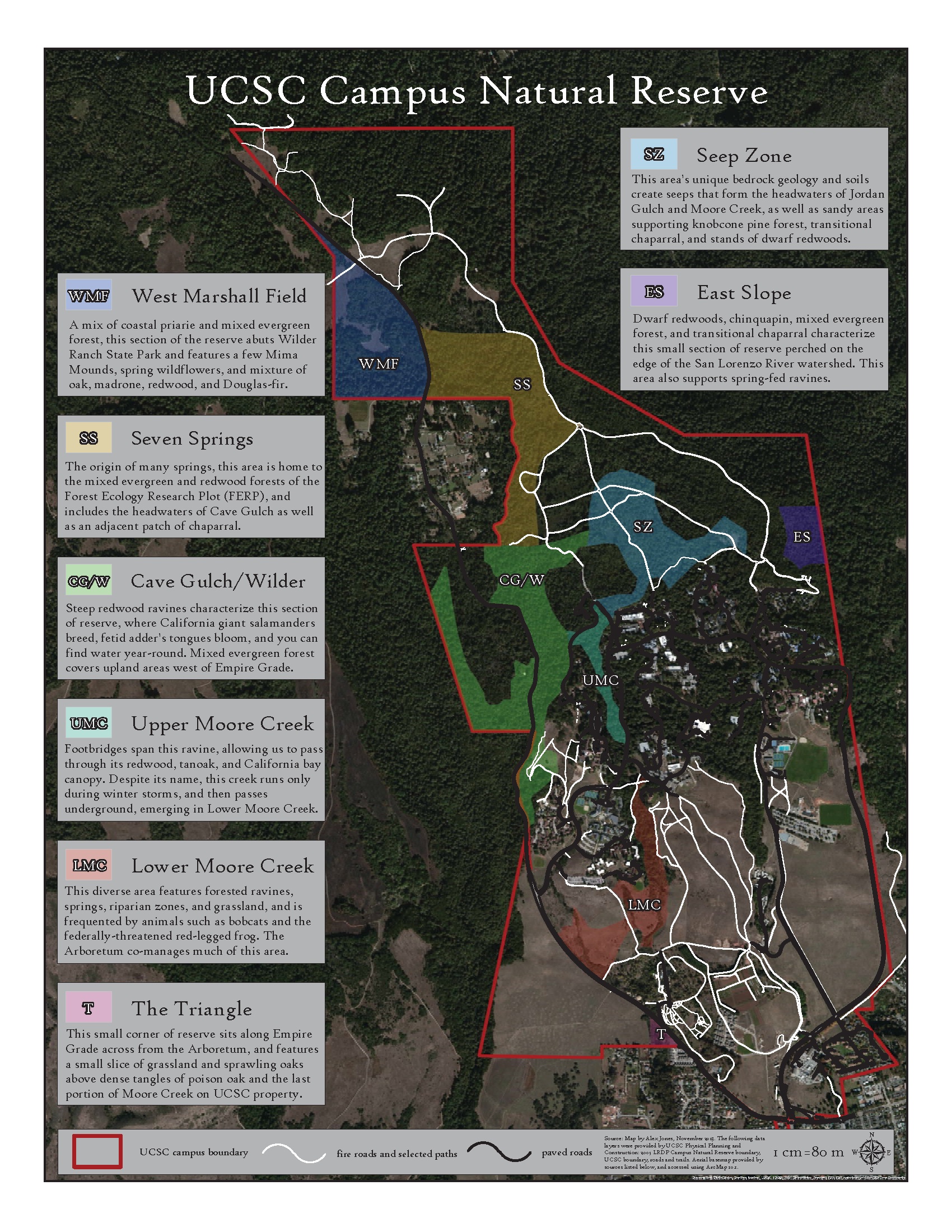Habitats and Geography
The 410 acre UCSC Campus Natural Reserve is separated into distinct habitat sectors across campus. From mixed conifer and coast redwood forest, wetlands, coastal prairie, to maritime chaparral; these sectors offer conserved habitat for research and field skill development. The pages on the left detail features of these areas.
The text in this section of the website, and in susequent descriptions of UC Santa Cruz Natural Reserve areas, is largely extracted from Brown and Norris (1985). Organization, some edits, updates, and the “Management” and “Opportunities…” subsections were added by Alex Jones in spring 2014.

On May 8, 1985, Chancellor Robert Sinsheimer established the 400-acre Campus Natural Reserve (CNR) which includes all the major natural habitats of campus in a single, nearly continuous parcel of land. Some of these boundaries were changed with the 2005 Long Range Development Plan (LRDP), resulting in a net growth of 10 acres to the CNR (see Appendix A for a comparison of the 1988 and 2005 CNR boundaries). The reserve represents an important resource for field-oriented teaching and research, as well as the protection of many unique features of the land on campus. The reserve once included the Younger Lagoon and the adjacent pocket beach and intertidal bench at UCSC’s Long Marine Lab, but now this land has been incorporated into the University of California’s Natural Reserve System as the Younger Lagoon Reserve. This reserve joins the suite of UC NRS reserves, also including Año Nuevo Island Reserve, Fort Ord Natural Reserve, and Landels-Hill Big Creek Natural Reserve, managed by UCSC.
The pages to the left provide brief descriptions of each area within the CNR, and highlight special teaching and research values; such as significant or unusual soil types, geologic features, and plant and animal species. It should be noted that many other, non-CNR, campus lands are also utilized for teaching, as they are either conveniently located in close proximity to classrooms or provide other interesting environments worthy of investigation. These areas, however, are not detailed in these pages.
Brown, M., K.S. Norris. (1985). Academic Plan for the campus natural areas reserves. Unpublished report by the Campus Natural Reserve Committee submitted to the chancellor, UC Santa Cruz.
